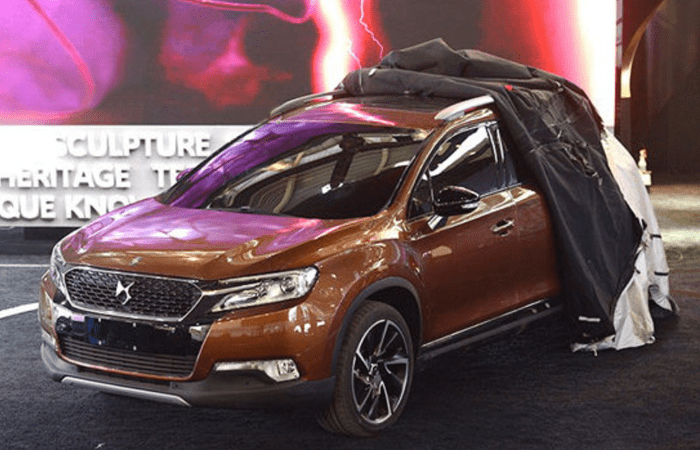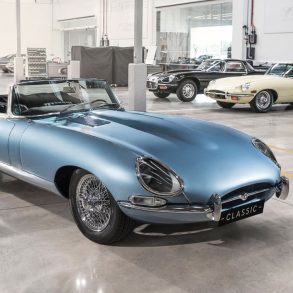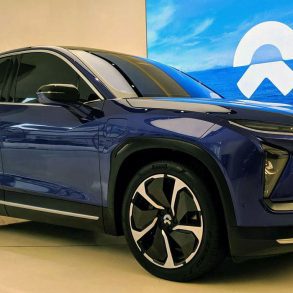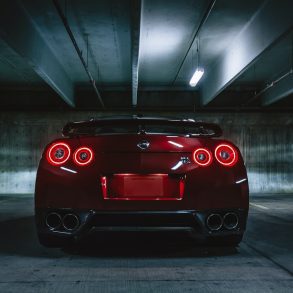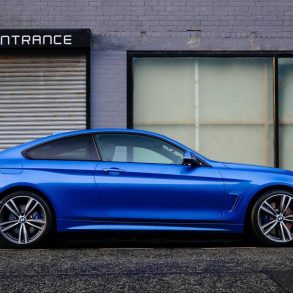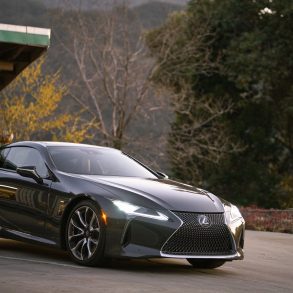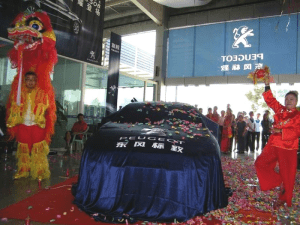

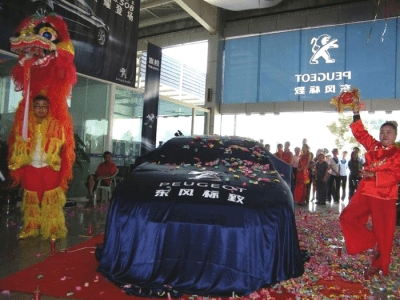 The Chinese passenger car market has become the biggest in the world, at almost 18 million units in 2013, and while German brands have focused on China as one of their core markets, the French carmakers Renault and PSA Peugeot-Citroën haven’t been successful in their attempt to gain a foothold in this market and are suffering from it now. Volkswagen has been China’s bestselling brand for years, selling more cars in China alone than in all of Europe. VW brand sales increased 17% in 2013 to almost 2,4 million cars. Even Audi, BMW and Mercedes-Benz sold more than 1 million cars combined in China last year, which is their biggest single market. This compares to “just” 550.000 PSA cars, while Renault imported less than 40.000 cars in 2013.
The Chinese passenger car market has become the biggest in the world, at almost 18 million units in 2013, and while German brands have focused on China as one of their core markets, the French carmakers Renault and PSA Peugeot-Citroën haven’t been successful in their attempt to gain a foothold in this market and are suffering from it now. Volkswagen has been China’s bestselling brand for years, selling more cars in China alone than in all of Europe. VW brand sales increased 17% in 2013 to almost 2,4 million cars. Even Audi, BMW and Mercedes-Benz sold more than 1 million cars combined in China last year, which is their biggest single market. This compares to “just” 550.000 PSA cars, while Renault imported less than 40.000 cars in 2013.
These 550.000 Peugeot and Citroën cars sold in China barely made up the 540.000 lost sales for the two brands in Europe since 2009. And with the European car market not very likely to climb back to pre-crisis numbers as quickly as the North-American market, the French are desperate to reduce their reliance on their struggling home market. But for now, their share of the enormous Chinese market is below 3,5%.
Bad execution
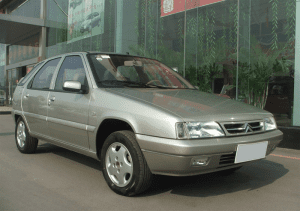
 It’s not that the French were late to the game in China, they just haven’t been very successful at it. As required by Chinese law, foreign automakers have to form a joint venture with a Chinese company to be allowed to produce locally. PSA formed their first joint venture with Guangzhou Automobile Group as early as 1985. This JV built Peugeots for the Chinese market, but was bankrupted in 1997. A second joint venture was established in 1992 with Dongfeng Motor, but as PSA was slow to introduce new products, sales remained low. In 1993, Renault partnered with a subsidiary of China’s aerospace technology company to build commercial vans. But this joint venture was disassembled in 2004 due to slow sales as well.
It’s not that the French were late to the game in China, they just haven’t been very successful at it. As required by Chinese law, foreign automakers have to form a joint venture with a Chinese company to be allowed to produce locally. PSA formed their first joint venture with Guangzhou Automobile Group as early as 1985. This JV built Peugeots for the Chinese market, but was bankrupted in 1997. A second joint venture was established in 1992 with Dongfeng Motor, but as PSA was slow to introduce new products, sales remained low. In 1993, Renault partnered with a subsidiary of China’s aerospace technology company to build commercial vans. But this joint venture was disassembled in 2004 due to slow sales as well.
The reason for the slow sales of these JV’s is that they produced European models without adapting them to Chinese preferences. These models didn’t vibe with Chinese customers, and also struggled with high production costs due to the low local content of parts. The French manufacturers would just ship relatively expensive European made parts to China for local assembly, which proved more costly than sourcing the parts locally.
Lessons learned
But they may have learned their lesson and it looks like this time the French are serious about breaking the Chinese car market once and for all. They are bringing new products to the market that are specifically tailored to the preferences and tastes of the Chinese car buyer, and they are banking on the popularity of French luxury brands in China.

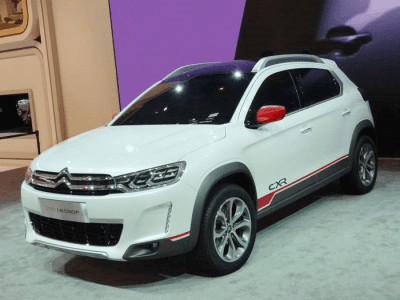 The Chinese consumers have a strong preference towards stretched sedans and crossovers, and those segments are exactly where the French automakers will focus on with new products. PSA’s joint venture with Dongfeng, who have also invested € 800 million and taken a stake in the French company to bail them out, has started local production of the Peugeot 3008 compact crossover and the long wheel-base Citroën C4L in 2013, while the production-ready Peugeot 408 (a sedan version of the European 308), the Peugeot 2008 small crossover, and a similar concept from Citroën, the C-XR small crossover, have been introduced at the Beijing Auto Show this month.
The Chinese consumers have a strong preference towards stretched sedans and crossovers, and those segments are exactly where the French automakers will focus on with new products. PSA’s joint venture with Dongfeng, who have also invested € 800 million and taken a stake in the French company to bail them out, has started local production of the Peugeot 3008 compact crossover and the long wheel-base Citroën C4L in 2013, while the production-ready Peugeot 408 (a sedan version of the European 308), the Peugeot 2008 small crossover, and a similar concept from Citroën, the C-XR small crossover, have been introduced at the Beijing Auto Show this month.
Besides the joint venture with Dongfeng, PSA has another joint venture, with Chongqing Chang’an Automobile, to produce its DS line of premium vehicles. DS is a stand-alone luxury brand in China, and 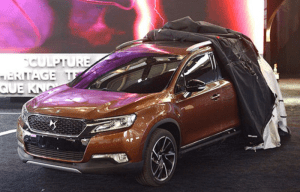 production of the brand’s
production of the brand’s  first locally produced model, the DS5 hatchback, started last year. PSA has big plans for DS in China, as a DS 5LS long wheel-base sedan version of the DS5 has just started production as well. And at the Beijing Auto Show, the DS 6WR compact crossover has been introduced, a model that should compete with the Audi Q5.
first locally produced model, the DS5 hatchback, started last year. PSA has big plans for DS in China, as a DS 5LS long wheel-base sedan version of the DS5 has just started production as well. And at the Beijing Auto Show, the DS 6WR compact crossover has been introduced, a model that should compete with the Audi Q5.
PSA is looking to expand its annual production capacity in China through its partnership with Dongfeng from 600.000 now to 750.000 units in 2015 and even further to 1,5 million units in 2020. On top of that, capacity through its partnership with Chang’an is planned to increase from 50.000 to 200.000 DS brand cars by 2016.
Renault: rather late than unprepared
With alliance partner Nissan already a strong player in China, Renault isn’t worried about its late arrival to the biggest and still one of the fastest growing car markets in the world. But the French can’t ignore a third of the global 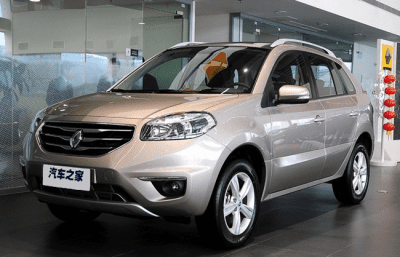 market completely, especially with such a weak market in Europe,
market completely, especially with such a weak market in Europe, 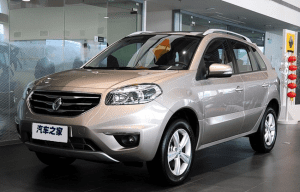 where the brand has lost more than 330.000 sales since 2010. In China, Renault’s most successful recent products have been the Koleos compact crossover and Fluence compact sedan, both imported from its South Korean subsidiary Renault Samsung Motors. Imports are heavily taxed in China, keeping Renault from selling high volumes until a local production base has been established.
where the brand has lost more than 330.000 sales since 2010. In China, Renault’s most successful recent products have been the Koleos compact crossover and Fluence compact sedan, both imported from its South Korean subsidiary Renault Samsung Motors. Imports are heavily taxed in China, keeping Renault from selling high volumes until a local production base has been established.
As a result, Renault has recently partnered up with Dongfeng for production in China, despite the latter’s investment in Renault’s rival PSA. Production of the Renault Koleos compact crossover is expected to begin in 2015, with an annual capacity of 150.000 cars. According to Renault-Nissan CEO Carlos Ghosn: “Arriving late or soon is not the issue. Are you ready? That’s the issue.”
At the 2014 Beijing Auto Show, the brand is also displaying the Renault Captur small crossover and the Initiale Paris large crossover concept car.
Opportunities
Luckily for the French, Chinese car buyers seem to gain a preference for foreign auto brands, as first quarter market share of domestic automakers has dwindled from 43,2% in 2013 to 38,7% this year. This offers an opportunity for growth for the French automakers, and thanks to the right products, Peugeot, Citroën and Renault seem to have found the recipe for success in the huge Chinese market. It will be interesting to see how these products will be received by the Chinese car buyer, who is spoiled for choice nowadays, as competition from American, Japanese and Korean automakers has increased in recent years. And these competitors will be unlikely to give up their share easily. Especially for Renault, who are relatively new to the market, and who have to compete with brands that have a decade-long presence in China, it will be a difficult market to crack.

